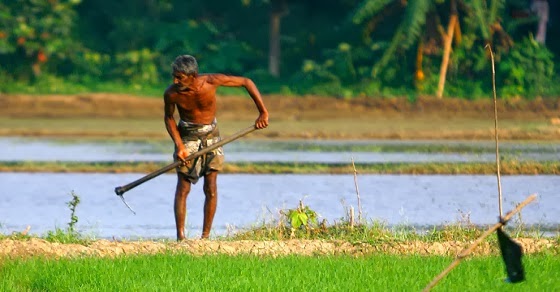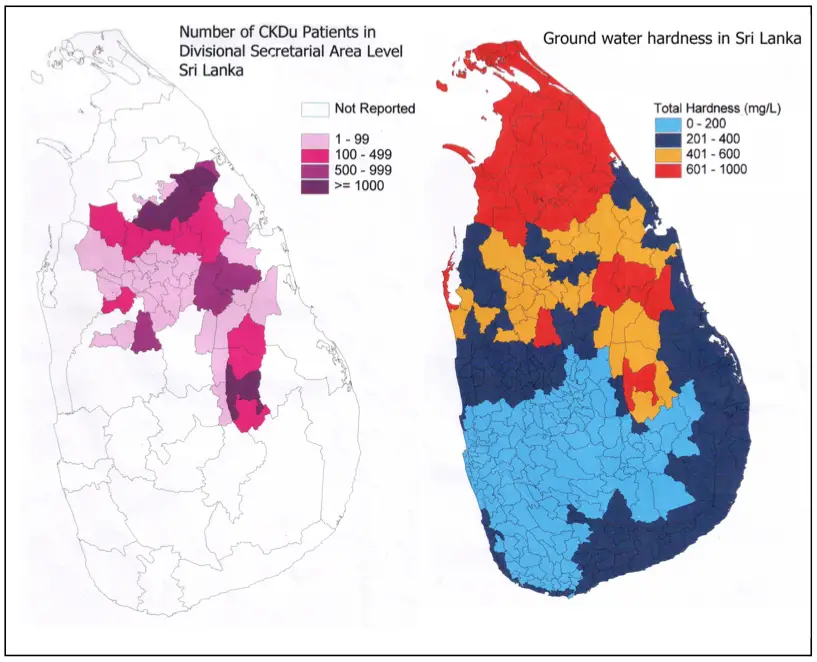By Sayer Ji
Contributing Writer for Wake Up World
The mystery of what is causing thousands to die each year from a fatal kidney disease may now be solved, with evidence pointing to the world’s most heavily used herbicide, Monsanto’s Roundup (glyphosate) as the primary culprit.
A study published in the International Journal of Environmental Research and Public Health proposes a link between the herbicide known as Roundup (aka glyphosate) and a series of mysterious epidemics of fatal Chronic Kidney Disease of Unknown origin (CKDu) affecting several poor farming regions around the world.
The extent of the health problem is so massive that the Center for Public Integrity found that CKDu has killed more people in El Salvador and Nicaragua than diabetes, AIDS and leukemia combined, over the past 5 years on record.
[pro_ad_display_adzone id=”110028″]
Monsanto’s Roundup Linked to Kidney Disease
Titled “Glyphosate, Hard Water and Nephrotoxic Metals: Are They the Culprits Behind the Epidemic of Chronic Kidney Disease of Unknown Etiology in Sri Lanka?“, researchers hypothesized that while glyphosate is toxic, it alone is not capable of destroying kidney tissue on the scale recently observed in rice paddy regions of Northern Sri Lanka, or in El Salvador where it is the second leading cause of death among men. They propose glyphosate becomes extremely toxic to the kidney when it mixes with ‘hard’ water or heavy metals like arsenic and cadmium, either naturally present in the soil or added externally through fertilizer inputs. Hard water contains ‘metals,’ such as calcium, magnesium, strontium and iron, along with carbonate, bicarbonate, sulphate and chlorides.
The hypothesis explains a number of observations connected with the disease, including why in afflicted regions like Sri Lanka there has been a strong association between the consumption of hard water and the occurrence of this special kidney disease, with 96% of CKDu patients having consumed hard or very hard water for at least five years.
The image below shows how closely water hardness and the prevalence of CKDu overlap:
The Discovery of a ‘New Disease’
According to the study, a “Chronic Kidney Disease of Unknown Etiology (CKDu)” was discovered among the rice paddy farmers in Northern Central Province of Sri Lanka in the mid-1990s. The condition spread quickly to other farming areas, and now afflicts 15% of working age people in the northern part of the country, or a total population of 400,000 patients with an estimated death toll of around 20,000. Watch the 5 minute documentaries “Mystery in the Fields” and “Cycle of Death” for additional background information on afflicted areas around the world.
CKDu does not carry the same known risk factors as chronic kidney disease, which include diabetes, high blood pressure and glomerular nephritis, an inflammatory kidney condition. The Sri Lankan Ministry of Health introduced criteria for CKDu in 2009, including:
- No past history of, or current treatment for diabetes mellitus or chronic and/or severe hypertension, snake bites, urological disease of known etiology or glomerulonephritis.
- Normal glycosylated hemoglobin levels (HbA1C Ë‚ 6.5%).
- Blood pressure Ë‚160/100 mmHg untreated or Ë‚140/90 mmHg on up to two ”¨antihypertensive agents.
Owing to the fact that geographical and socioeconomical factors play such a central role in determining risk, it has been assumed that environmental and occupational factors are the main causative agents and therefore that CKDu is a form of toxic nephropathy, ie. chemically-induced damage. The authors point out that even the World Health Organization conducted studies to determine the origin of CKDu, and that the general consensus is the disease as multiple causes, including:
- Exposure to arsenic
- Exposure to cadmium
- Exposure to pesticides
- Consumption of hard water
- Low water intake
- Exposure to high temperatures (and resultant dehydration)
The authors, however, propose: “Whatever hypothesis that is propounded should be able to answer the questions as to why CKDu is confined to certain geographical areas of Sri Lanka and why there was no CKDu in Sri Lanka prior to the 1990s”.
Roundup Weedkiller (Glyphosate) the Likely Culprit
The study goes on to detail how since 1977 political changes in Sri Lanka lead to large scale importation and application of agrochemicals, especially for rice paddy farming. They propose that 12-15 years of cumulative exposure to low concentration kidney-damaging compounds, along with their increasing bioaccumulation within the environment and human body, could explain the sudden appearance in the 1990’s of clinically identifiable CKDu. They hypothesized the existence of a so-called Compound “X” as the incriminating agent, which they determined would have to have the following characteristics:
- A compound made of recently (2–3 decades) introduced chemicals to the CKDu endemic area.
- Ability to form stable complexes with hard water.
- Ability to capture and retain arsenic and nephrotoxic metals and act as a “carrier” ”¨in delivering these toxins to the kidney.
- Possible multiple routes of exposure: ingestion, dermal and respiratory absorption.
- Not having a significant first pass effect when complexed with hard water.
- Presenting difficulties in identification when using conventional analytical methods.
Following an extensive search they arrived at glyphosate, which is the most widely used herbicide in Sri Lanka, as the likely culprit. They describe how glyphosate’s half-life can increase from several weeks in normal water to many years in hard water, as it forms hard to biodegrade glyphosate-metal complexes (GMCs). GMC exposure can happen in two ways: consumption of contaminated hard water, or it can form within the human body following glyphosate’s entry into circulation. Farmers (and their families) are at constant risk of exposure through skin or inhalation, in addition to untreated drinking water.
The study describes in depth the way in which GMCs may evade the liver’s detoxification mechanisms and damage the kidneys. This is in addition to the over 20 distinct modes of toxicity we have indexed on the GreenMedInfo.com database on glyphosate harms.
Finally, the authors discuss evidence that glyphosate may be behind similar epidemics of chronic kidney disease of unknown cause in Central American countries of El Salvador, Nicaragua and Costa Rica, and India.
To read the entire open access study visit this link: www.mdpi.com/1660-4601/11/2/2125
(Main photo credit: Ed Kashi for La Isla Foundation/VII)
Updated September 2014
Further articles by Sayer Ji:
- Roundup Weedkiller Found In 75% of Air and Rain Samples, Government Study Finds
- Live Flu Vaccines Increase Infectious Bacteria Counts 100-Fold in Mice
- FAIL: Another Mammography Study Finds They Don’t Save Lives
- MSG Proven Highly Toxic: 1 Dose Causes Headache In Healthy Subjects
- Black Seed Extract ‘Cures’ HIV Patient Naturally
- The Grain That Damages The Human Brain
- The Cancer-Causing Metal Millions Eat, Wear or Have Injected Into Their Kids
- Biophotons: The Human Body Emits, Communicates with, and is Made from Light
- The 2013 Measles Outbreak: A Failing Vaccine, Not A Failure To Vaccinate
- 3 Evidence-Based Ways To Reverse Skin Aging Naturally
- Why Is The Food Industry Poisoning Us With Trillions of Nanoparticles?
- How to Clean Your Arteries With One Simple Fruit
- 13 Evidence-Based Medicinal Properties of Coconut Oil
About the author:
 Sayer Ji is an author, researcher, lecturer, an advisory board member of the National Health Federation, and the founder of GreenMedInfo.com, the world an open access, evidence-based resource supporting natural and integrative modalities. His writings have been published and referenced widely in print and online, including Truthout, Mercola.com, The Journal of Gluten Sensitivity, New York Times and The Well Being Journal.
Sayer Ji is an author, researcher, lecturer, an advisory board member of the National Health Federation, and the founder of GreenMedInfo.com, the world an open access, evidence-based resource supporting natural and integrative modalities. His writings have been published and referenced widely in print and online, including Truthout, Mercola.com, The Journal of Gluten Sensitivity, New York Times and The Well Being Journal.
In 1995 Sayer received a BA degree in Philosophy from Rutgers University, where he studied under the American philosopher Dr. Bruce W. Wilshire, with a focus on the philosophy of science. In 1996, following residency at the Zen Mountain Monastery in upstate New York, he embarked on a 5 year journey of service as a counsellor-teacher and wilderness therapy specialist for various organizations that serve underprivileged and/or adjudicated populations. Since 2003, Sayer has served as a patient advocate and an educator and consultant for the natural health and wellness field.
[pro_ad_display_adzone id=”110027″]








